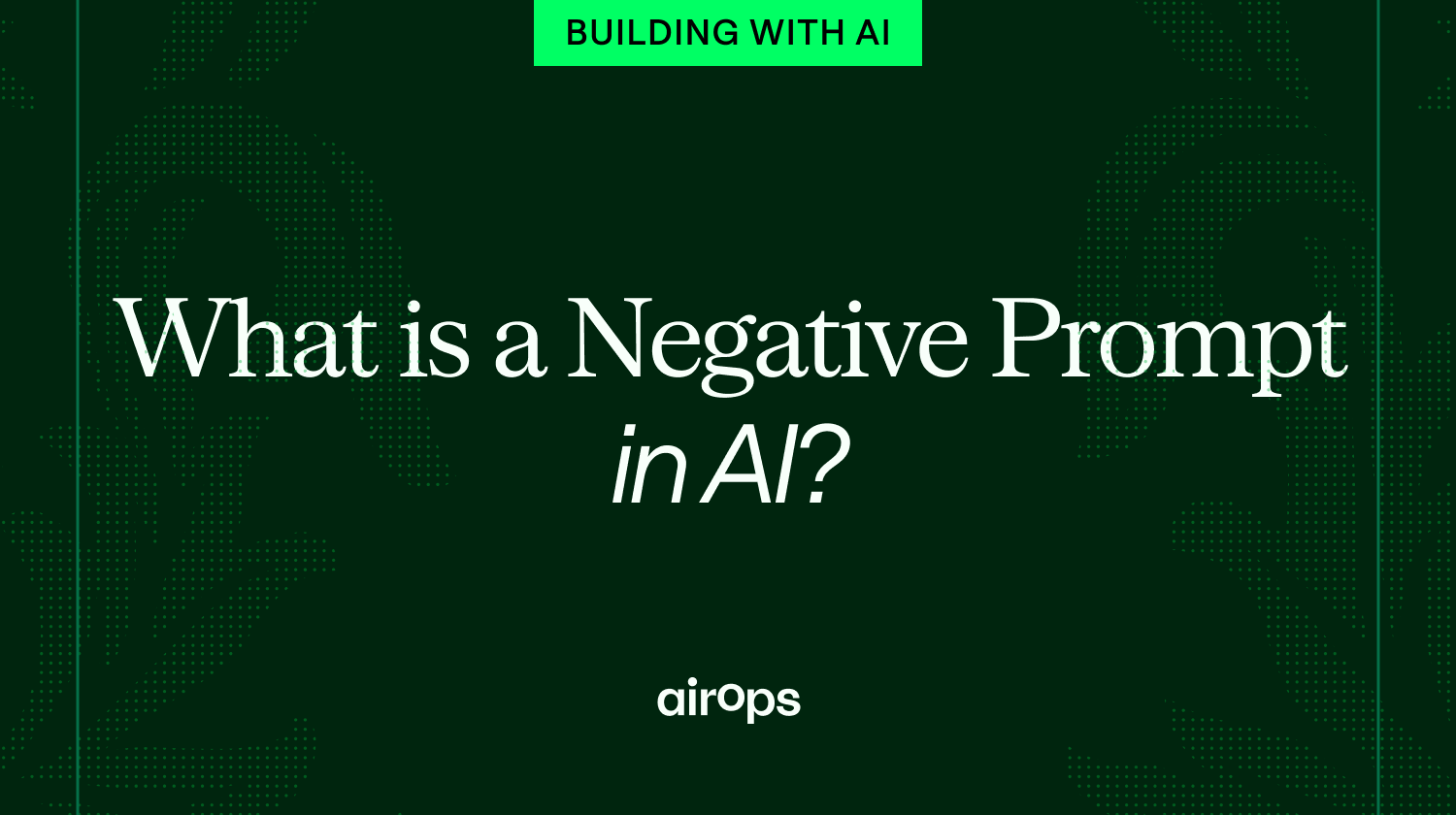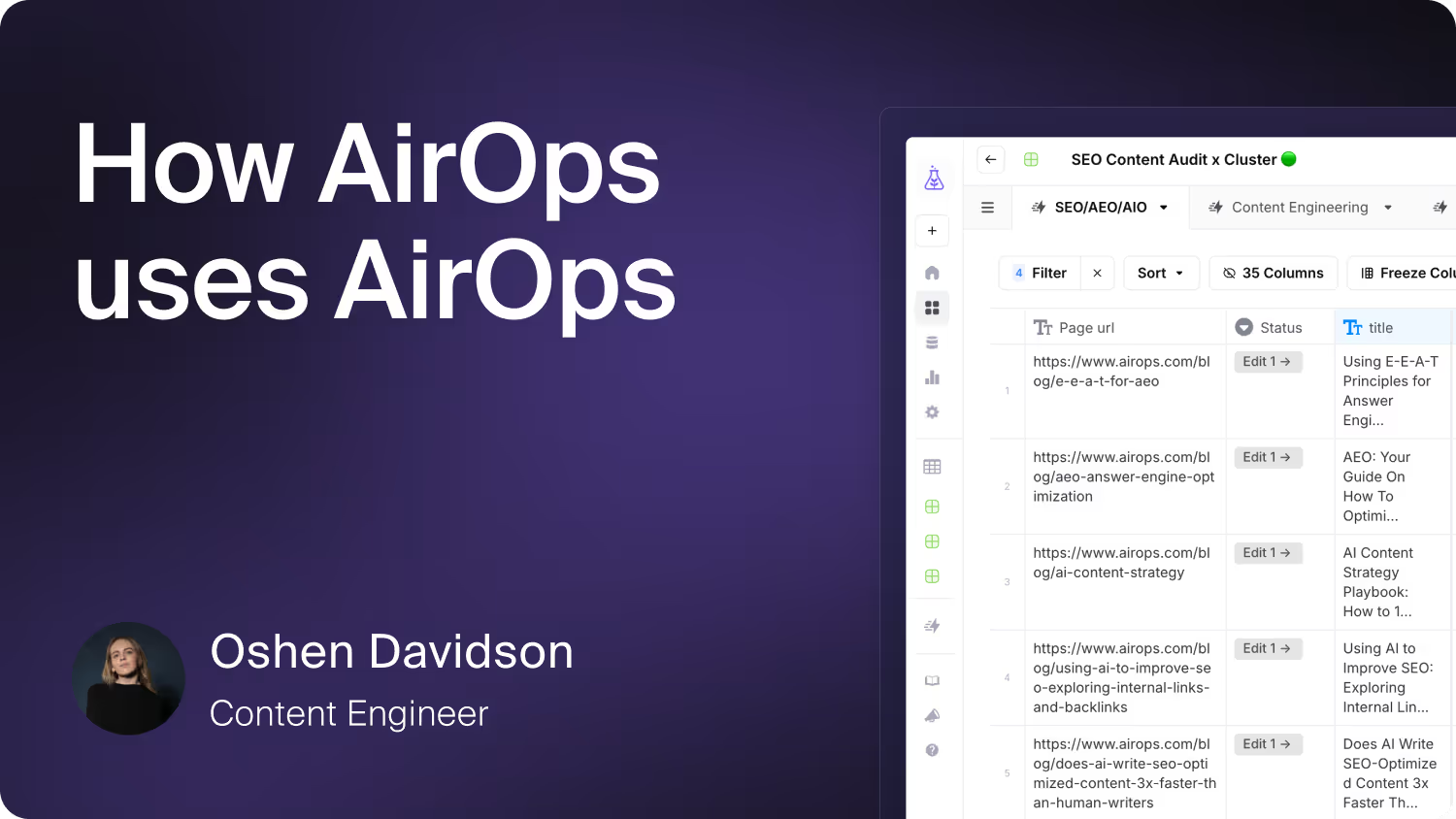What is a Negative Prompt in AI?

In artificial intelligence, prompts are essential tools for guiding models to generate desired outputs. While many people are familiar with prompts that tell the AI what to focus on, there's another type that's equally valuable but less commonly discussed: the negative prompt.
A negative prompt instructs the AI on what to avoid, shaping the output by excluding certain content or behaviors. This can be especially useful when aiming for more precise, refined results. Whether you are a developer working with AI tools or simply curious about how these systems are fine-tuned, understanding negative prompts can help you make better use of the technology.
In this article, we will explore what negative prompts are, how they are used, and why they are an important part of working with AI models effectively.
Negative Prompts and Why You Should Use Them
A negative prompt in AI is a technique used to guide AI models to avoid generating specific elements or characteristics in the output. It's essentially the opposite of a regular prompt, which tells the AI what to include. Instead, a negative prompt tells the AI what not to include.
This can be incredibly useful when you want to ensure that certain undesirable features don't appear in your AI-generated content. By explicitly stating what you don't want, you can help steer the AI in the right direction and get results that are more in line with your expectations.
Example of a Negative Prompt in Stable Diffusion
Let's say you're using Stable Diffusion to generate an image of a beautiful landscape. You might use a regular prompt like "a stunning mountain vista with a crystal-clear lake."
However, you realize that the AI keeps adding buildings or power lines to the image, which detracts from the natural beauty you're trying to capture.
This is where a negative prompt comes in handy. You could add something like "no buildings, no power lines, no man-made structures" to your prompt. This tells the AI to avoid including those specific elements in the generated image.
By using this negative prompt, you can help ensure that your AI-generated landscape is free of unwanted man-made features and instead focuses on the natural beauty of the mountains and lake.
How do Negative Prompts Work in AI?
Negative prompts work by explicitly defining elements or characteristics that the AI should avoid when generating content. When you provide a negative prompt, you're essentially telling the AI model, "Don't include these specific things in the output."
The AI takes this information and uses it to refine its generation process, actively steering clear of the specified undesired elements. This helps to optimize the AI-generated content, ensuring that it more closely aligns with your intended outcome.
For example, in the context of AI-generated images, a negative prompt might specify "no watermarks, no text, no blurriness." The AI would then work to create an image that is free of watermarks, text, and blurriness, focusing instead on the desired elements of the image.
In natural language processing, a negative prompt could be used to avoid generating content with specific phrases, topics, or styles. By providing these negative guidelines, you can help the AI produce text that is more relevant, appropriate, and on-target.
Negative prompts are a valuable tool in AI workflows, as they allow you to have more control over the output without having to manually sift through and edit the generated content. By proactively specifying what to avoid, you can save time and effort while ensuring that the AI-generated results are more closely aligned with your goals.
Benefits of Using Negative Prompts in AI
Negative prompts offer several key benefits when working with AI-generated content. Let's explore how they can enhance your AI workflows and help you achieve better results.
Enhanced Control Over AI-Generated Content
One of the primary advantages of using negative prompts is the increased control they provide over the content generated by AI models. By specifying elements to avoid, you can guide the AI to create outputs that are more closely aligned with your vision.
This level of control is particularly valuable when you have specific requirements or constraints for your AI-generated content. Whether you're creating images, text, or other types of media, negative prompts allow you to set clear boundaries and steer the AI away from unwanted elements.
Improved Alignment with Desired Outcomes
Negative prompts help ensure that the AI-generated content better aligns with your desired outcomes. By explicitly stating what you don't want to see in the output, you can minimize the chances of the AI producing irrelevant or inappropriate content.
This improved alignment saves you time and effort in post-processing and editing, as the AI-generated content is more likely to meet your expectations from the start. With negative prompts, you can get closer to your ideal output faster, reducing the need for extensive manual refinement.
Increased Efficiency in AI Workflows
Incorporating negative prompts into your AI workflows can significantly boost efficiency. By proactively specifying elements to avoid, you can reduce the amount of time spent reviewing and filtering AI-generated content.
Instead of manually sifting through outputs to remove unwanted elements, negative prompts allow you to preemptively exclude them. This streamlined process enables you to focus on the content that matters most, saving valuable time and resources.
Additionally, negative prompts can help you iterate and refine your AI models more quickly. By providing clear guidance on what to avoid, you can rapidly narrow down the search space and arrive at the desired output with fewer iterations. This accelerated process allows you to achieve your goals faster and more efficiently.
Types of Negative Prompts in AI
Here are some categories of negative prompts that can help you understand which one you should use in your prompts.
Quality-Based Negative Prompts
Quality-based negative prompts focus on avoiding issues related to the overall quality of the AI-generated content. These prompts help ensure that the output meets certain standards and is free from common artifacts or imperfections.
Examples of quality-based negative prompts include:
- No blurriness
- No pixelation
- No low resolution
- No watermarks
- No text overlays
- No distortions
- No color cast
By using these negative prompts, you can guide the AI to generate content that is visually appealing, clear, and free from distracting elements that detract from the overall quality.
Content-Specific Negative Prompts
Content-specific negative prompts are tailored to the particular subject matter or theme of the AI-generated content. These prompts help steer the AI away from including undesired elements or topics that are not relevant to your intended output.
For example, if you're generating images of animals, you might use negative prompts like:
- No humans
- No man-made objects
- No urban environments
- No domesticated animals
These content-specific negative prompts ensure that the AI focuses on generating images that are solely related to the desired subject matter, avoiding the inclusion of irrelevant or unwanted elements.
Style-Oriented Negative Prompts
Style-oriented negative prompts are used to guide the AI away from generating content in specific artistic styles or aesthetics that don't align with your vision. These prompts help maintain consistency and coherence in the generated output.
Examples of style-oriented negative prompts include:
- No cartoon style
- No black and white
- No vintage look
- No abstract art
- No oversaturated colors
By using these negative prompts, you can ensure that the AI-generated content adheres to your desired visual style, avoiding unwanted deviations or inconsistencies.
How to Effectively Use Negative Prompts in AI
Now that you understand what negative prompts are and how they can benefit your AI workflows, let's explore some best practices for effectively using them in your projects.
Start with a Focused Set of Negative Prompts
When you first begin incorporating negative prompts into your AI workflows, it's best to start with a focused set of prompts that address the most critical aspects you want to avoid. This targeted approach allows you to quickly see the impact of negative prompts on your generated content without overwhelming the AI with too many restrictions.
For example, if you're generating product descriptions for an e-commerce website, you might start with negative prompts like "no brand names, no pricing information, no technical jargon." These prompts help ensure that the AI-generated descriptions are free of elements that could detract from the user experience or violate your content guidelines.
As you gain more experience with negative prompts and see how they affect your AI-generated content, you can gradually expand your set of prompts to cover a wider range of elements and characteristics.
Experiment with Different Combinations
To get the most out of negative prompts, experiment with different combinations and variations. Each AI model and dataset is unique, so what works well for one project might not be as effective for another.
Try mixing and matching different types of negative prompts, such as quality-based, content-specific, and style-oriented prompts, to see how they interact and influence the generated content. Keep track of your experiments and note which combinations yield the best results for your specific use case.
For example, if you're using AI to improve your SEO, you might experiment with negative prompts that focus on avoiding keyword stuffing, duplicate content, or irrelevant information. By iterating on different combinations of these prompts, you can fine-tune your AI-generated content to be more search engine-friendly and valuable to your target audience.
Balance Specificity and Creativity
When crafting negative prompts, strike a balance between being specific enough to guide the AI in the right direction and allowing room for creativity and innovation. Overly restrictive negative prompts can limit the AI's ability to generate diverse and interesting content, while prompts that are too broad may not provide enough guidance to avoid unwanted elements.
Aim to create negative prompts that clearly communicate your intent without being overly prescriptive. Use language that is clear and concise, and avoid using jargon or technical terms that could confuse the AI.
For example, instead of using a negative prompt like "no abstract or surreal elements," which could be open to interpretation, try something more specific like "no melting clocks, no floating objects, no impossible geometry." This level of specificity helps the AI understand exactly what you want to avoid while still allowing for creative exploration within those boundaries.
As you develop your skills in crafting effective negative prompts, you'll find that the right balance of specificity and creativity can lead to AI-generated content that is both aligned with your goals and engaging for your audience.
Closing Thoughts - Are Negative Prompts Essential for Achieving Optimal Results in AI?
In summary, negative prompts play a significant role in refining AI outputs by instructing models on what to avoid. Throughout the article, we discussed how negative prompts help improve the accuracy of results, prevent unwanted content, and provide more control over the AI’s responses. By limiting specific behaviors or exclusions, negative prompts allow users to achieve more targeted and precise outcomes. Whether in creative generation, automated tasks, or specialized applications, the ability to steer AI away from irrelevant or undesired elements is crucial for fine-tuning results.
For readers, this means that understanding and utilizing negative prompts is key to getting the most out of AI tools. Whether you’re a beginner or experienced in AI, incorporating negative prompts can elevate the quality of your results, making the process more efficient and reliable. Ultimately, negative prompts are an essential component for anyone looking to optimize their use of AI.
For businesses looking to streamline their operations and enhance productivity, AirOps provides a cutting-edge solution that goes beyond standard AI tools like ChatGPT, Gemini, and Claude. With expertly crafted growth templates designed for specific tasks, AirOps ensures fast, high-quality results tailored to your business needs. Its Brand Kit feature guarantees a unified tone and style, which is crucial for maintaining brand consistency across various content channels.
The platform offers advanced control over AI-driven processes by integrating first-party data and third-party insights, creating fully customized workflows. Additionally, AirOps supports comprehensive growth optimization, making it the perfect choice for businesses aiming to scale effectively and achieve measurable outcomes.
Interested in seeing how AirOps can revolutionize your workflow? Start building with AirOps today and revamp your processes with AI!
Win AI Search.
Increase brand visibility across AI search and Google with the only platform taking you from insights to action.
Get the latest on AI content & marketing
Get the latest in growth and AI workflows delivered to your inbox each week
.avif)





